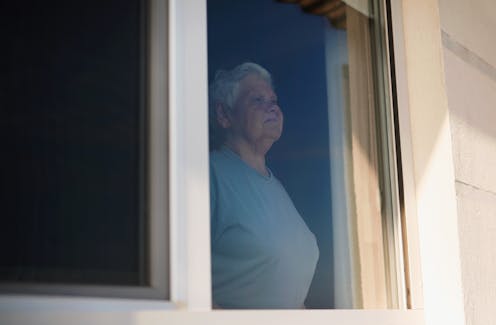More funds for aged care won't make it future-proof. 4 key strategies for sustainable growth
- Written by Michael Woods, Professor of Health Economics, University of Technology Sydney

The government costs of providing subsidised aged care for around 1.5 million seniors are set to blow out, while earnings for providers are dropping. Aged care delivers many essential services to senior Australians from meals, transport and help at home, to 24/7 nursing and personal care in aged care homes.
This week, the governor of the Reserve Bank, Phillip Lowe, warned Australia is on track to spend more on things like disability services, aged care and defence than what taxes can pay for:
There are increasing demands on the public purse. It’s harder to find out how we’re going to pay for that.
He told ABC viewers this was a discussion the nation needed to have.
In a paper released today, we argue the sustainability of the aged care system needs such a national discussion.
The paper raises serious questions about whether the system can survive the measures needed to address the:
- current unacceptable quality and safety of some services
- unmet demand for home-based services
- low wages and poor conditions of the workforce and
- high number of providers operating at a loss.
The sector already costs taxpayers A$27 billion per year and it accounts for 1.2% of the economy (GDP). This is expected to nearly double to 2.1% within 40 years.
While demand for subsidised services is high and rising, many parts of the system need improvement. The federal budget can’t solve these problems by placing the entire burden on taxpayers.
A gloomy outlook
Looking forward, the aged care system will not be “self-correcting”.
Australia’s population is ageing. The number of people aged 85 and older is projected to triple to 1.9 million by 2060-61.
This will increase the demand for aged care services and staff and will coincide with an additional necessary lift in staffing to improve the quality of services.
At the same time, the proportion of the population of working age will decline.
Aged care will have to compete with the rest of the economy for skilled staff by offering more attractive wages and conditions. Providers will need more funding to meet these rising costs, especially given that around 60% of aged care homes are already operating at a loss.
Despite this, the government’s budget is not only stressed now, but projections from the 2021 Intergenerational Report show budget deficits and government debt will be stretching out for at least the next 40 years.
To add to the gloom, our analysis, and that of the Actuaries Institute, suggests the aged care budgetary impact could be even more severe than government projections.
Budgetary pressures are not the only concern. Other dimensions of the sustainability challenge include the:
- future availability of a skilled workforce
- viability of high-quality providers and services
- need to maintain community satisfaction with service standards.
More than money – 4 key strategies
Our paper offers four broad strategic approaches to addressing these issues.
1. Slow the level of demand
An often overlooked first strategy is to reduce the growth in demand for subsidised aged care services. Sound investment in primary care, such as more funding for nurse practitioners, physiotherapists and other allied health workers, can help older people improve their health and well-being and maintain their independence for longer.
2. Improve services and health
A second approach is to take a closer look at the effectiveness of the current range of subsidised services. For instance, the delivery of more restorative care would help more people regain and retain their independence. This could reduce the need for some ongoing services and produce better outcomes for those in need, at a lower overall cost.
3. Improve efficiency and workforce engagement
The efficiency of service delivery by providers also deserves closer examination. Evidence shows a highly trained and engaged workforce is much more productive and delivers improved standards of care.
At the same time, by improving career pathways for aged care workers, staff turnover costs can be reduced and the need for short-term agency replacements can be lessened.
4. Balance private and public costs
Finally, the balance between the private and public costs of the aged care subsidies should be reassessed.
There has to be a safety net for the many senior Australians who need care and yet are living on low incomes and have few assets. However, the overall level of consumer contributions to care services amounts to less than 10% of total care costs. The national debate needs to reach broad consensus on what is a fair and reasonable contribution from seniors who have higher incomes and wealth.
Read more: How to complain about aged care and get the result you want
Planning for the future of aged care
While greater funding from taxpayers and better-off consumers is inevitable, a more sustainable future needs to be achieved through the adoption of multiple interconnected strategies like these. The nature, scale and timing of such strategies should be at the heart of a national conversation about the elders of our society today and tomorrow.
At stake is the sustainable delivery of safe, high-quality services from viable and responsive providers and highly skilled and engaged staff. But these need to be at a cost that can be afforded by current and future generations.
Read more: Today's aged care falls well short of how we'd like to be treated – but there is another way
Authors: Michael Woods, Professor of Health Economics, University of Technology Sydney





